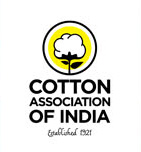Dr. A. Sakthivel, Chairman, Apparel Export Promotion Council (AEPC) welcomed the announcement of Union Budget on the RMG garment industry. He thanked the Finance Minister in accepting the demand of the industry to restore the ‘zero excise duty route’ for cotton and manmade sector (spun yarn) at the yarn, fabric and garment stage. Chairman, AEPC also lauded the Finance Minister for continuing TUF in 12th Plan with an outlay of Rs. 2400 Cr .
The creation of apparel parks within SITP and Rs. 10 Cr. allocation will go in a long way in increasing export of value added textile chain, he said. APEC Chief appreciated the Finance Minister for setting aside of Rs. 5000 Cr for helping SME sector through SIDBI. On behalf of Micro, small and medium enterprises, he thanked the Finance Minister that the benefits or preferences enjoyed by them will stay with them for upto three years after they grow out of the category in which they obtained the benefit. This benefit will go in a long way in promoting employment.
The announcement of vocational courses offered by the institute affiliated to the State Council of Vocational Training and testing activities would be in the negative list for the service tax. We are confident that the courses offered by our Apparel Training and Design centres would fall under this category. Dr. Sakthivel, complimented Finance Minister for ensuring in the Parliament for supporting ensuing Foreign Trade Policy, which is going to be announced next month.
Chairman, AEPC welcomed allocation of Rs. 1000 Cr for Skill Development and hoped that substantial allocation would be made for RMG sector, which allows immediately absorption of workers, displaced from agriculture and undertake lot of responsibility of the Govt. in solving employment problem.
He, however, appealed that the Finance Minister should consider RMG export sector for certain requests in the case of following: Dr. Sakthivel reiterated that Finance Minister may approve the proposal of the Council for accepting scheme of increasing garment exports to a level of US$ 30 Bn in the next three years by allowing Manmade fabric and Cotton specialty fabrics at flat 5% custom duty on only 10% of export performance realized in the previous year on exports of garment.
This will be for exporters of woven and knitwear and shall be for export purposes only on actual user basis to augment the basic raw material for garment export. He said that this scheme may be approved so that it can be announced during the announcement of Foreign Trade Policy.
1) Agriculture credit is available at 4% to farmers and for Handloom, the term loans is available at 6%. India’s garment exports, which constitutes nearly 65% to 70%, cotton, cotton blend garments, they attract interest of around 9% to 11%. It is suggested that export credit may be given to RMG exporters at flat rate of 7%, as given in the past.
2) The investment allowance has been given for a project of Rs. 100 Cr and above. It is proposed that in order to encourage garment export sector, this limit should be brought down to the investment of Rs. 10 Cr. This will boost employment in a large number.
3) The modalities of commodity transaction tax are being worked-out. It is proposed that textile export should be exempted from such tax in order to remain competitive in the world market AEPC Chairman appealed Finance Minister to accept the above proposal, which will lead to reduction in trade deficit, continue to give employment to workers in the apparel sector. (Source: Tecoya Trend)
